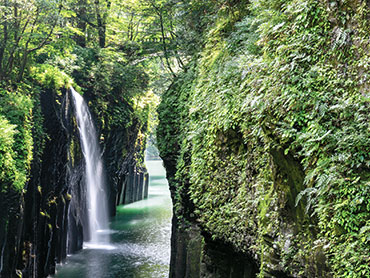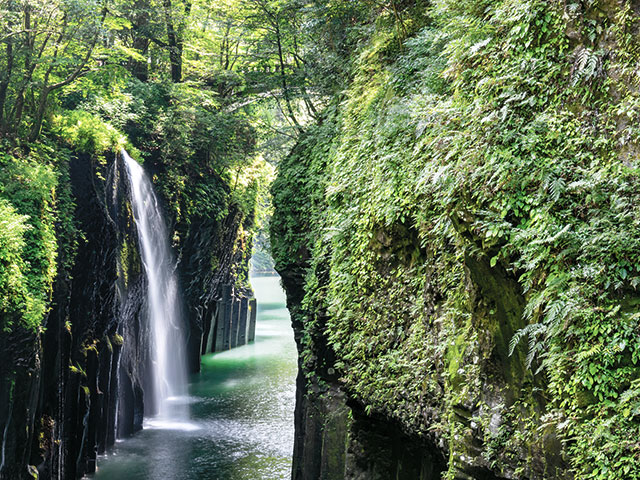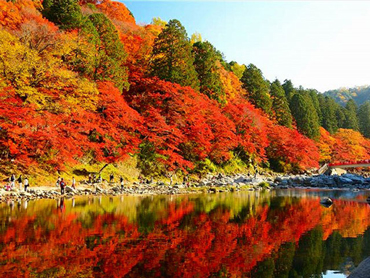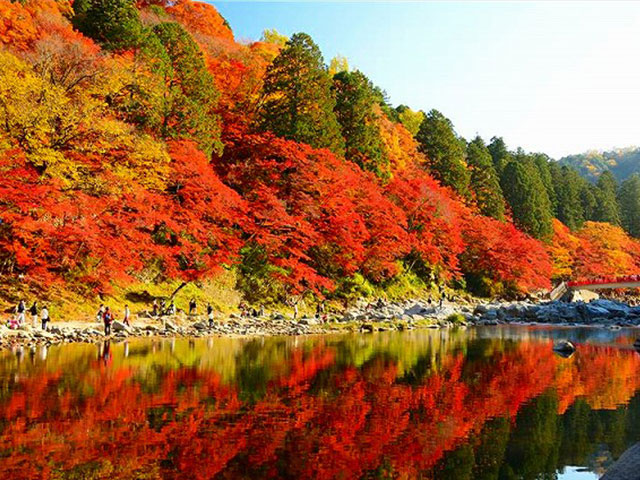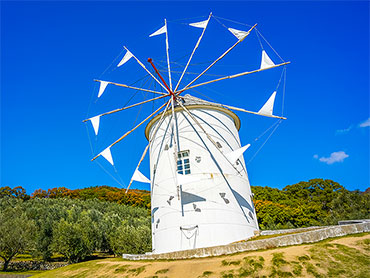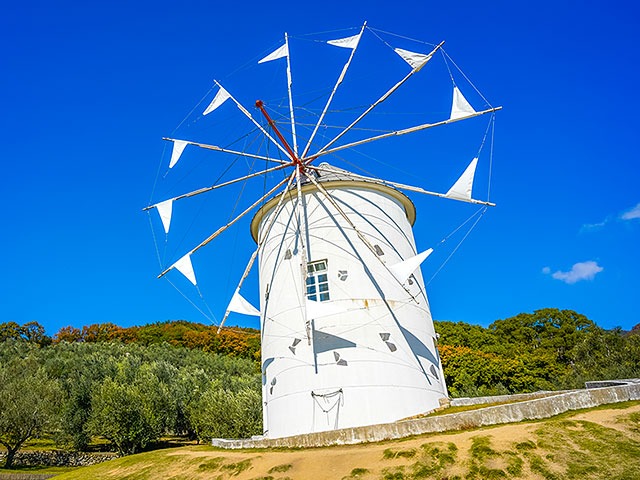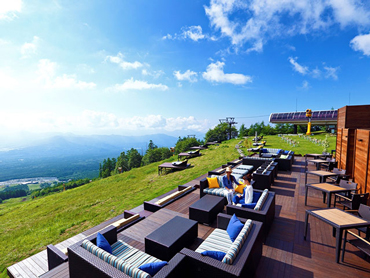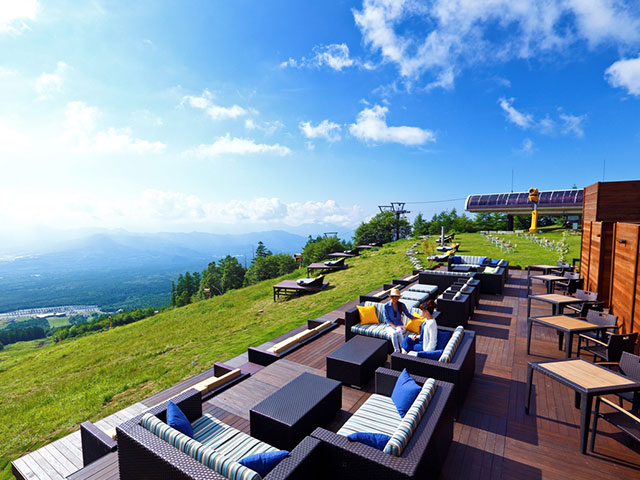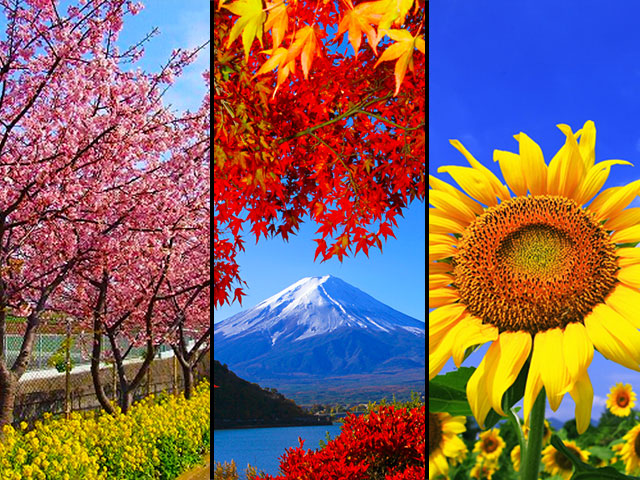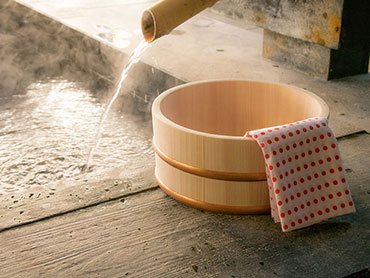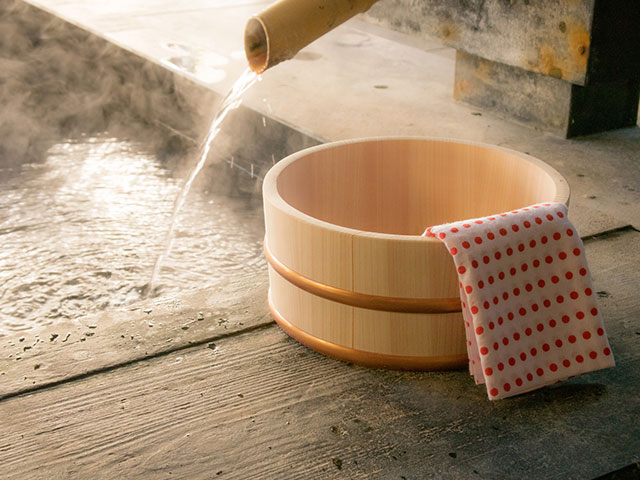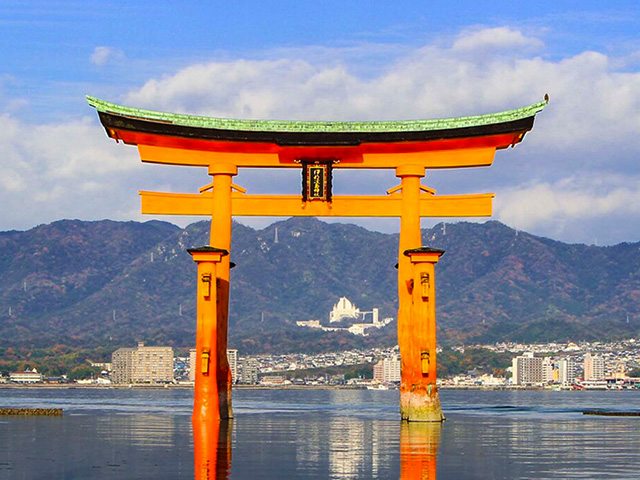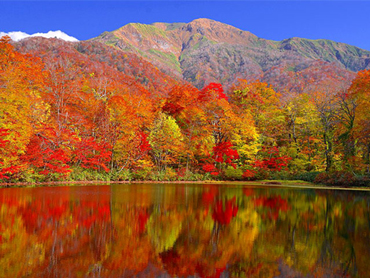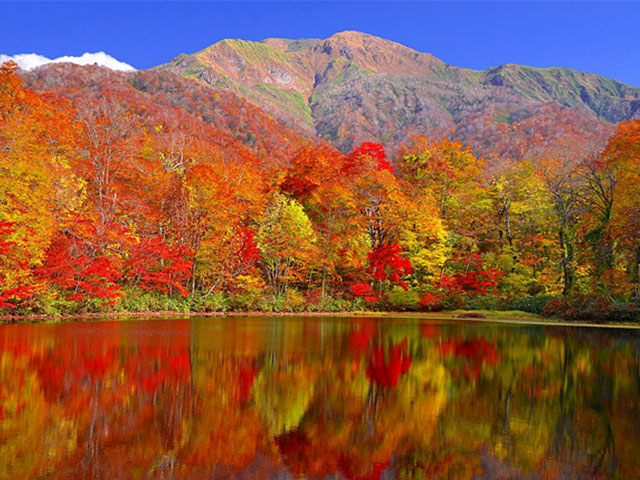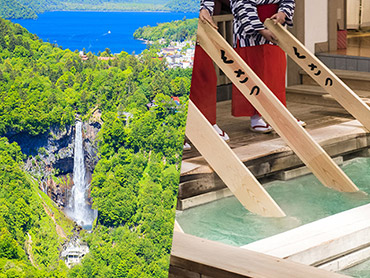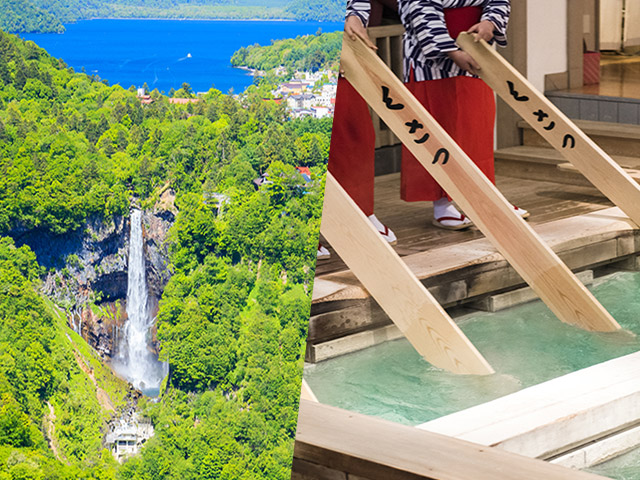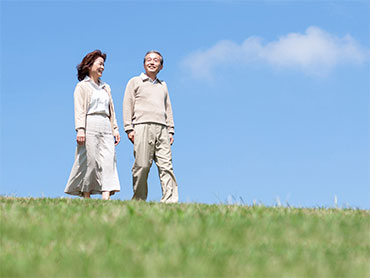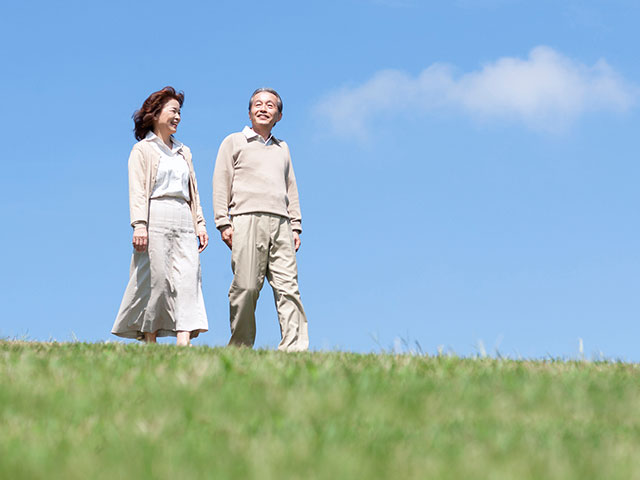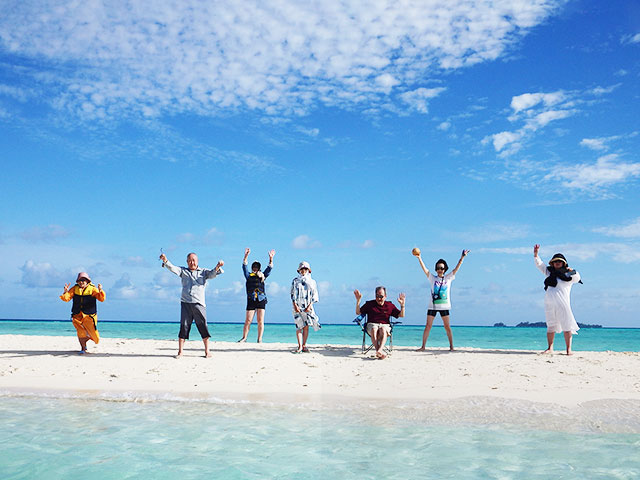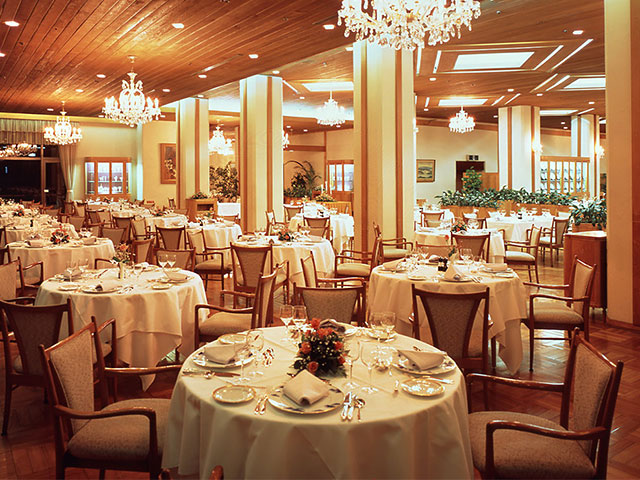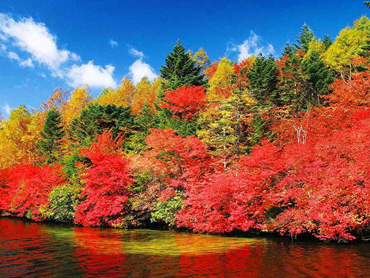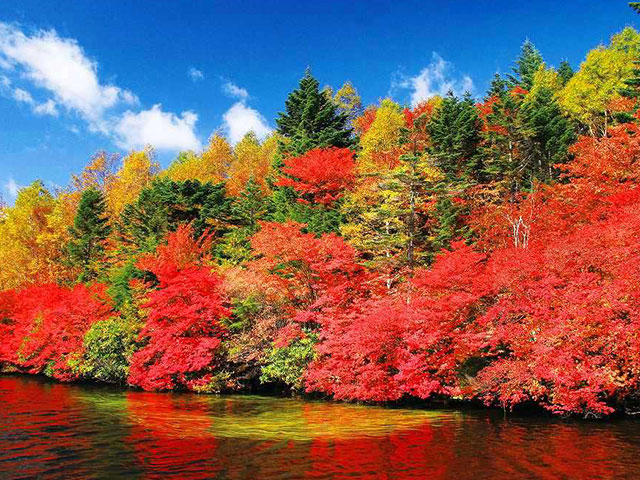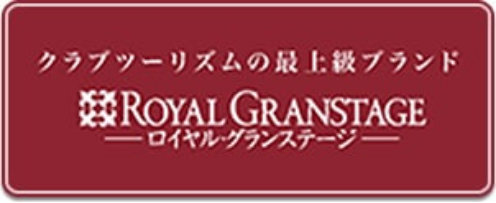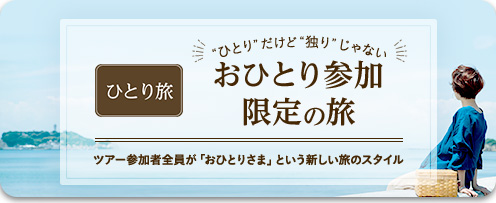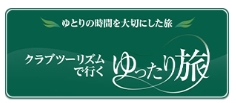Autumn foliage viewing spots in Kansai area


Club Tourism 's autumn leaves tours and travel specials! With a tour conductor, you will be fully supported! We provide information on famous autumn leaves destinations such as Tohoku, Kyoto, Korankei, Daisetsuzan, Takachiho Gorge, Meiji Jingu Gaien, and Yoro Valley, along with recommended tours departing from various locations nationwide. Tour search and reservations are also easy.
Ranking of popular autumn foliage spots in Kansai area

Image courtesy of Toji Temple
No.1 Kyoto
Kyoto highly popular city with commercials aired every year, and has many spots to view autumn leaves.
Why not visit one of Japan's most famous autumn foliage spots, one that you will never get bored of, no matter how many times you visit?

Kudaraji Temple / Photo courtesy of Biwako Visitors Bureau
2nd Place Koto Sanzan (Shiga Prefecture)
Shiga's famous autumn foliage spot, where three ancient temples are painted in color
Each has its own history and beauty...

(Image)
3. Tanzan Shrine (Nara Prefecture)
The shrine is known as the "Nikko of Kansai" and is dominated by approximately 3,000 maple trees!
出発地別
人気の紅葉ツアーランキング
Famous autumn foliage spots in Kansai area

-
Koto Sanzan
-
Hikone Castle
-
Ishi no Tera・Kyorinbo Temple
-
Konan Sansan
-
Metasequoia Namiki Avenue
-
Nara Park
-
Tanzan Shrine
-
Hasedera Temple
-
Muroji Temple
-
Soni Highland
-
Dorokyo Gorge
-
Kumano Kodo・Hosshinmon-Oji
-
Koyasan
-
Minoh Waterfall
-
Hoshi no Buranko
-
Takeda Castle Ruins
-
Rokko-Arima Ropeway
-
Ankokuji Temple
-
Zuihoji Park
-
Kokoen Garden
Koto Sanzan (Shiga Prefecture) Best time to see autumn leaves: Mid-Nov. to early Dec.
Shiga's famous autumn foliage spot, where three ancient temples are painted in color
Each has its own history and beauty...
The three Tendai sect temples, Saimyoji, Kongorinji, and Baekjeji, are collectively known as the "Koto Sanzan), and are located to the east of Lake Biwa and to the west of the Suzuka Mountains. Along with Eigenji, they are popular spots for viewing autumn leaves.
■ Saimyoji Temple
It is said that the temple was founded by the monk Sanshu at the request of Emperor Ninmyo during the Heian period.
It flourished as a place of prayer and training throughout the Heian, Kamakura and Muromachi periods, and was fortunate enough to have escaped the fires caused by Oda Nobunaga's war. The main hall, three-story pagoda and Nitenmon Gate, all built by Hida craftsmen, still remain to this day.
The main hall was built in the early Kamakura period and is a purely Japanese style building that does not use a single nail.
It has been recognized for its beautiful preservation of the Kamakura style and has been designated as the first National Treasure.
■ Kongorinji Temple
During Nara period, the temple was founded by Gyoki at the request of Emperor Shomu.
Legend has it that Minamoto no Yoshitsune donated a sword in the hope of "victory in battle" in the pursuit of Kiso no Yoshinaka, and that Hojo Tokimune ordered Sasaki Yoritsuna to pray for the surrender of the Mongol army.
The main hall, Daihikaku, is considered a representative example of Japanese-style architecture from the Kamakura period and is designated a national treasure. The stone steps leading from the mountain gate to the main hall exude the atmosphere of the time when the temple was a mountain castle.
■Hyakusaiji Temple
It is one of the oldest temples in Omi Province. It is said to have been founded 1,400 years ago, in the 14th year of the reign of Empress Suiko (606), by Prince Shotoku, imitating the "Ryuunji Temple" in Baekje Province, and the principal image of both "Ryuunji Temple" and "Baekje Temple" is said to be two eleven-headed Kannon Bodhisattva figures carved from the same giant tree.
Kudara-ji Temple, which the missionary Luis Frois praised as "heaven on earth," is also known as Hyakusai-ji Temple.
Click here for a tour to see the autumn leaves at this spot
* Departure Place button will only be displayed for departure Place of departure where tours are available.
Hikone Castle (Shiga Prefecture) Best time to see autumn leaves: Mid-Nov. to early Dec.

Image /photo provided by: Biwako Visitors Bureau
The autumn foliage at the national treasure Hikone Castle Castle and the scenic spots Genkyuen and Rakurakuen is spectacular
The area around Hikone Castle is covered with deep evergreen forests, and the scenery changes with the seasons, matching the beauty of the castle. Genkyuen and Rakurakuen, former feudal lord gardens located northeast of Hikone Castle, are large pond-style stroll gardens, and are beautiful gardens that you should stop by if you visit Hikone Castle.
Click here for a tour to see the autumn leaves at this spot
* Departure Place button will only be displayed for departure Place of departure where tours are available.
Ishi no Tera・Kyorinbo Temple (Shiga Prefecture) Best time to see autumn leaves: Mid-Nov. to early Dec.

(Image)
Illuminated during the autumn foliage season! Two gardens showcasing the charming beauty of wabi-sabi
Kyorinbo, founded by Prince Shotoku, is usually a closed temple and is only open to the public in spring and during the autumn foliage season. In front of the Shoin, which was built in the early Edo period, there is the Enshu Garden, a nationally designated scenic garden designed by Kobori Enshu, and the moss garden Fudaraku Garden, created during the Muromachi period. During the autumn foliage season, the gardens are lit up, creating a fantastical sight.
Click here for a tour to see the autumn leaves at this spot
* Departure Place button will only be displayed for departure Place of departure where tours are available.
Konan Sanzan (Shiga Prefecture) Best time to see autumn leaves: Mid-Nov. to early Dec.

©Lake Biwa Visitors Bureau
Three temples with national treasures: Jorakuji Temple, Chojuji Temple, and Zensuiji Temple
The three ancient Tendai temples located in Konan City - Joraku-ji, Choju-ji, and Zensui-ji - are collectively known as Konan Sanzan.
All three temples were founded in Nara period, and their quaint appearance can be enjoyed in the autumn when the leaves change color.
Click here for a tour to see the autumn leaves at this spot
* Departure Place button will only be displayed for departure Place of departure where tours are available.
Metasequoia Namiki Avenue (Shiga Prefecture) Best time to see autumn leaves: Mid-Nov. to early Dec.

Metasequoia Namiki Avenue *Biwako Visitors Bureau
A magnificent view created by approximately 500 metasequoia trees and a straight road
Approximately 500 metasequoia trees are planted on both sides of the road, which stretches for about 2.4 km, and in autumn, the leaves turn beautiful red, gradually changing from yellow to brick red. The symmetrical landscape created by the cone-shaped metasequoia trees and the straight road harmonizes with the distant Nosaka Mountains, and has been selected as one of the New 100 Views of Japanese Roadside Trees.
Click here for a tour to see the autumn leaves at this spot
* Departure Place button will only be displayed for departure Place of departure where tours are available.
Nara Park (Nara Prefecture) Best time to see autumn leaves: Mid-Nov. to early Dec.
To the ancient hometown of Yamatoji...
Nara Park: Deer play and ancient temples bathed in red
Nara Park The park is a representative tourist spot of Nara city, with a vast site area of 4 km from east to west and 2 km from north to south, where famous temples representing Nara such as Todaiji and Kofukuji, and the Nara National Museum, where the Shosoin exhibition is held, which attracts many visitors every year, are built in the park.
Wakakusa in the background, you can see deer spending their time leisurely everywhere in the park.
Visitors can enjoy the autumn colors of maple, ginkgo, and nankin-haze (Chinese waxwing) trees until early winter.
Click here for a tour to see the autumn leaves at this spot
* Departure Place button will only be displayed for departure Place of departure where tours are available.
Tanzan Shrine (Nara Prefecture) Best time to see autumn leaves: Mid-Nov. to early Dec.

(Image)
The 3,000 maple trees are a highlight! A shrine known as the "Nikko of Kansai"
Have you ever seen a photo of fiery maple leaves decorating the magnificent vermilion-painted Thirteen-Story Pagoda?
Tanzan Shrine is a famous spot for viewing autumn leaves that represents the Yamatoji region, and the sight of Japan's only wooden thirteen-story pagoda, colored with autumn leaves all over the mountain, is something you will never forget once you've seen it.
The shrine is dedicated to Fujiwara no Kamatari and is famous as the place where he and Prince Nakano Oe discussed the Taika Reforms. It is said that the shrine got its name because it is located on the mountain where they discussed their plans.
In autumn, approximately 3,000 maple trees burn in red and vermilion, competing with the vermilion of the shrine building.
A statue of Fujiwara no Kamatari is enshrined in the Sangensha Kasuga-style main hall, and the shrine is said to have been the model for Nikko Toshogu Shrine.
Click here for a tour to see the autumn leaves at this spot
* Departure Place button will only be displayed for departure Place of departure where tours are available.
Hasedera Temple (Nara Prefecture) Best time to see autumn leaves: Mid-Nov. to early Dec.
A representative autumn foliage spot in Nara, where the leaves turn beautiful red
Hasedera Temple, famous for its beautiful peony flowers, is visited by many people in autumn as one of Nara 's most famous spots for viewing autumn leaves.
The stunning contrast between the five-story pagoda and the temple grounds colored by autumn leaves such as maples is a must-see.
Click here for a tour to see the autumn leaves at this spot
* Departure Place button will only be displayed for departure Place of departure where tours are available.
Muroji Temple (Nara Prefecture) Best time to see autumn leaves: Mid-Nov. to early Dec.
Autumn leaves quietly standing at Nyonin-Koyasan
"Onna Koyasan" has graciously accepted women even in times when many temples did not allow women to enter. Enjoy the colorful autumn leaves in the temple grounds along with a tour of the national treasures, the Kondo Hall and the five-story pagoda.
Click here for a tour to see the autumn leaves at this spot
* Departure Place button will only be displayed for departure Place of departure where tours are available.
Soni Highland (Nara Prefecture) Best time to see autumn leaves: Early Oct. to mid Nov.

(Image)
The silver grass in the setting sun looks like a golden carpet
Soni Highland, famous for the silver grass that grows all over the plateau, is a national park located at an altitude of about 700m on the border between Nara and Mie prefectures.
In autumn, as far as the eye can see, silver ears of silver grass sway like a sea, and the whole area is covered in silver grass, except for the wetland known as Okame Pond.
This pond, which has stories such as the "Okame Legend," is also said to be a treasure trove of wetland plants.
It is said that the time when this sea of silver grass looks most beautiful is in the autumn evenings.
Bathed in the setting sun, the sight of the entire plateau shining golden is truly fantastical.
Click here for a tour to see the autumn leaves at this spot
* Departure Place button will only be displayed for departure Place of departure where tours are available.
Dorokyo Gorge (Wakayama Prefecture, Mie Prefecture, Nara Prefecture) Best time to see autumn leaves: Mid-Nov. to early Dec.

Provided by: Wakayama Prefecture Tourism Federation
A hidden gem on the Kii Peninsula where autumn leaves adorn the valley
This tourist spot is said to be the best in the Kii Peninsula, with its beautiful gorge, including rock faces that can be seen up close and magnificent cliffs. In autumn, the gorge is colored with autumn leaves, allowing you to enjoy the beautiful scenery created by nature.
Click here for a tour to see the autumn leaves at this spot
* Departure Place button will only be displayed for departure Place of departure where tours are available.
Kumano Kodo・Hosshinmon-Oji (Wakayama Prefecture) Best time to see autumn leaves: Mid-Nov. to early Dec.

(Image)
Hosshinmon Oji is said to be the entrance to the sacred area of Kumano.
The poet Fujiwara no Teika, who visited here in 1201,
He wrote that he was moved by the sight of the lush trees turning red and painting the temple grounds.
This is the best spot to see autumn leaves along the Kumano trail.
Click here for a tour to see the autumn leaves at this spot
* Departure Place button will only be displayed for departure Place of departure where tours are available.
Koyasan (Wakayama Prefecture) Best time to see autumn leaves: Late Oct. to mid Nov.

(Image)
A sacred site of Japanese Buddhism registered as a World Heritage Site
Koyasan is home to many coniferous trees, but in the autumn foliage season, many areas, such as the inner sanctuary and the Serpentine Trail, turn a brilliant red, creating a stunning contrast with the temples. Enjoy viewing the autumn leaves while savoring the sacred air of Koyasan, a sacred Buddhist site.
Click here for a tour to see the autumn leaves at this spot
* Departure Place button will only be displayed for departure Place of departure where tours are available.
Minoh Waterfall (Osaka Prefecture) Best time to see autumn leaves: Mid-Nov. to late Nov.

Photo courtesy of Osaka Tourism Bureau (Public Interest Foundation) Osaka Tourism and Convention Bureau (Image)
A famous waterfall from the "Top 100 Waterfalls of Japan" and autumn leaves
Minoh Waterfall is a famous waterfall with a drop of 33m that has been selected as one of the "100 Best Waterfalls in Japan."
It is said that the name comes from the fact that the way the water flows down resembles a farm tool called a winnowing basket.
The area around Minoh Waterfall, which is said to be the latest in Minoh Park to change color, is bustling with tourists who come to see the autumn leaves, as the maples turn fiery red and the air becomes refreshing.
Click here for a tour to see the autumn leaves at this spot
* Departure Place button will only be displayed for departure Place of departure where tours are available.
Hoshi no Buranko (Osaka Prefecture) Best time to see autumn leaves: Mid-Nov. to early Dec.

(Image)
The symbol of the Tanabata legend and the starry village! It is also one of the largest pedestrian suspension bridges in the country!
This wooden deck suspension bridge is 180m above sea level, 280m in total length, and 50m above ground level, making it one of the largest pedestrian suspension bridges in Japan. Enjoy the thrill of an aerial stroll surrounded by autumn leaves.
Click here for a tour to see the autumn leaves at this spot
* Departure Place button will only be displayed for departure Place of departure where tours are available.
Takeda Castle Ruins (Hyogo Prefecture) Best time to see autumn leaves: Mid-Nov. to early Dec.

(Image)
"Castle in the Sky" that cannot be reached by large bus
Takeda Castle is a mountain castle located in Asago City, Hyogo Prefecture, and has been selected as one of Japan's 100 Greatest Castles. The castle tower and other structures no longer exist, and only the stone walls remain, but the castle still attracts many visitors.
The trees take on autumn colors, creating a beautiful contrast with the remaining stone walls, pleasing to the eyes of all who stroll through the area.
Click here for a tour to see the autumn leaves at this spot
* Departure Place button will only be displayed for departure Place of departure where tours are available.
Rokko-Arima Ropeway (Hyogo Prefecture) Best time to see autumn leaves: Early Nov. to late Nov.

(Image)
Take an aerial walk to enjoy the autumn leaves that change color depending on the altitude
The Rokko-Arima Ropeway will celebrate its 50th anniversary in Jul. 2020.
The first gondola upgrade in 27 years and station building renovation work were completed, and the third-generation new gondola began operation on Mar. 20. From the large glass surface, you can enjoy a more majestic and thrilling panorama of the autumn leaves of Mt. Rokko.
Click here for a tour to see the autumn leaves at this spot
* Departure Place button will only be displayed for departure Place of departure where tours are available.
Ankokuji Temple (Hyogo Prefecture) Best time to see autumn leaves: Early Nov. to mid Nov.

(Image)
It's like a painting. It's a famous spot for viewing autumn leaves that only a few people know about!
Ankokuji Temple in Toyooka City, Hyogo Prefecture is a famous spot for viewing autumn leaves that is known only to those in the know. The temple is usually closed to the public, but it opens only during the autumn foliage season.
The Enkianthus campanulatus, which is said to be about 150 years old, is famous for its vibrant autumn leaves, and the Enkianthus campanulatus visible across the tatami room looks like a framed painting.
Click here for a tour to see the autumn leaves at this spot
* Departure Place button will only be displayed for departure Place of departure where tours are available.
Zuihoji Park (Hyogo Prefecture) Best time to see autumn leaves: Mid-Nov. to early Dec.

(Image)
A famous autumn foliage spot that was also loved by Toyotomi Hideyoshi
Zuihoji Park is located at the highest point (500m above sea level) of Arima Onsenkyo hot spring town and is one of Hyogo Prefecture's most famous autumn foliage spots.
This is the former site of the Obaku sect Zuihoji Temple, and currently all that remains is the Sanmon Gate, which is said to be a relic of Fushimi Momoyama Castle.
When Toyotomi Hideyoshi visited Arima, he saw the autumn leaves at Zuihoji Temple and praised them, saying, "I never get tired of looking at them," and so the temple was given the name "Higurashi no Niwa" (Garden of Days).
Click here for a tour to see the autumn leaves at this spot
* Departure Place button will only be displayed for departure Place of departure where tours are available.
Kokoen Garden (Hyogo Prefecture) Best time to see autumn leaves: Mid-Nov. to early Dec.

(Image)
A Japanese garden with an Edo period atmosphere
This Japanese garden features a stroll-style pond and makes use of the backdrop of Himeji Castle, a registered World Heritage Site. With a site area of over 30,000 square meters, you can enjoy the charming scenery that exudes the atmosphere of the Edo period.
Click here for a tour to see the autumn leaves at this spot
* Departure Place button will only be displayed for departure Place of departure where tours are available.
Search for Tours by Criteria
Search by Keyword
FAQ
The best time to see the flowers is usually from early Oct. to early Dec..
Easy online travel consultation
Customer Co-Creation Activities
Latest Tours and Information
Club Tourism Travel Brand
Overseas Travel
Club Tourism Internet Membership Information
-
A wide range of services exclusively available to members
-
Search for trips anytime, anywhere!
-
Be the first to know about the best seasonal travel deals!





